-
EXECUTIVE SUMMARY 19
-
MARKET ATTRACTIVENESS
-
ANALYSIS 21
-
GLOBAL PROTECTIVE FABRICS MARKET, BY MATERIAL 22
-
GLOBAL PROTECTIVE FABRICS MARKET, BY TYPE 23
-
GLOBAL PROTECTIVE
-
FABRICS MARKET, BY END-USE INDUSTRY 24
-
GLOBAL PROTECTIVE FABRICS MARKET, BY REGION 25
-
MARKET INTRODUCTION
-
DEFINITION
-
SCOPE
-
OF THE STUDY 26
-
MARKET STRUCTURE 27
-
RESEARCH METHODOLOGY 28
-
RESEARCH PROCESS 28
-
PRIMARY RESEARCH 29
-
SECONDARY RESEARCH 30
-
MARKET SIZE ESTIMATION 30
-
TOP-DOWN AND BOTTOM-UP APPROACH 31
-
FORECAST MODEL 32
-
LIST OF ASSUMPTIONS
- INCREASING DEMAND
- DRIVERS IMPACT ANALYSIS
-
& LIMITATIONS 33
-
MARKET DYNAMICS 34
-
INTRODUCTION 34
-
DRIVERS 35
-
GROWING ADOPTION OF VARIOUS INDUSTRIAL SAFETY NORMS AND REGULATIONS 35
-
FOR FIRE- AND HEAT-RESISTANT FABRICS IN WILDFIRE INCIDENCES 36
-
RESTRAINT
- HIGH
- RESTRAINT IMPACT ANALYSIS 38
-
COSTS ASSOCIATED WITH PROTECTIVE FABRICS 37
-
OPPORTUNITY 38
- POTENTIAL ADOPTION
-
OF PHASE CHANGE MATERIALS 38
-
TREND 39
- TRENDING LIGHTWEIGHT NON-WOVEN FABRICS AND NANOFIBERS 39
-
MARKET FACTOR ANALYSIS
-
SUPPLY
- PROTECTIVE FABRICS MANUFACTURERS 41
- DISTRIBUTION CHANNELS 41
- END-USE INDUSTRIES 41
-
CHAIN ANALYSIS 40
-
RAW MATERIALS SUPPLIERS 40
-
PORTER''S FIVE FORCES
- BARGAINING POWER OF SUPPLIERS 42
- THREAT OF SUBSTITUTES 43
- BARGAINING POWER OF BUYERS
- INTENSITY
-
MODEL 42
-
THREAT OF NEW ENTRANTS 42
-
OF RIVALRY 43
-
PRICING OVERVIEW, BY REGION (USD/METER) 43
-
IMPACT OF COVID 19 OUTBREAK ON GLOBAL PROTECTIVE
-
FABRICS MARKET 43
-
IMPACT ON SUPPLY CHAIN 44
-
ON END-USE INDUSTRY DEMAND 44
-
RAW MATERIAL SUPPLY 44
-
IMPACT ON DISTRIBUTION & SALES CHANNEL
-
IMPACT
-
GLOBAL PROTECTIVE FABRICS MARKET, BY MATERIAL TYPE 45
-
OVERVIEW 45
- PROTECTIVE FABRICS: MARKET
- PROTECTIVE FABRICS: MARKET
-
ESTIMATES & FORECAST BY MATERIAL TYPE, 2019–2030 45
-
ESTIMATES & FORECAST BY MATERIAL TYPE, 2019–2030 46
-
ARAMID 47
- ARAMID: MARKET ESTIMATES
-
& FORECAST BY REGION,2019–2030 47
-
POLYOLEFIN 48
- POLYOLEFIN: MARKET ESTIMATES & FORECAST
-
BY REGION,2019–2030 48
-
POLYAMIDE 49
- POLYAMIDE: MARKET ESTIMATES & FORECAST BY REGION,2019–2030
-
POLYBENZIMIDAZOLE
-
(PBI) 50
-
POLYBENZIMIDAZOLE (PBI): MARKET ESTIMATES & FORECAST BY REGION,2019–2030
-
COTTON
- COTTON:
-
MARKET ESTIMATES & FORECAST BY REGION,2019–2030 51
-
POLYESTER 52
- POLYESTER: MARKET ESTIMATES & FORECAST
-
BY REGION,2019–2030 52
-
OTHERS 53
- OTHERS: MARKET ESTIMATES & FORECAST BY REGION,2019–2030
-
GLOBAL
-
PROTECTIVE FABRICS MARKET, BY TYPE 54
-
OVERVIEW 54
- PROTECTIVE FABRICS: MARKET ESTIMATES & FORECAST
- PROTECTIVE FABRICS: MARKET ESTIMATES & FORECAST BY TYPE,
- BALLISTIC & MECHANICAL RESISTANT: MARKET ESTIMATES
-
BY TYPE, 2019–2030 54
-
BALLISTIC & MECHANICAL RESISTANT 56
-
& FORECAST BY REGION,2019–2030 56
-
THERMAL, FIRE- AND HEAT-RESISTANT FABRICS 57
- THERMAL, FIRE-
-
AND HEAT-RESISTANT FABRICS: MARKET ESTIMATES & FORECAST BY REGION,2019–2030
-
CHEMICAL-RESISTANT
-
FABRICS 58
-
CHEMICAL-RESISTANT FABRICS: MARKET ESTIMATES & FORECAST BY REGION,2019–2030
-
UV-RESISTANT
-
FABRICS 59
-
UV-RESISTANT FABRICS: MARKET ESTIMATES & FORECAST BY REGION,2019–2030
-
OTHERS
- OTHERS:
-
MARKET ESTIMATES & FORECAST BY REGION,2019–2030 60
-
GLOBAL PROTECTIVE FABRICS MARKET, BY END-USE INDUSTRY
-
OVERVIEW
- PROTECTIVE
- PROTECTIVE FABRICS:
-
FABRICS: MARKET ESTIMATES & FORECAST BY END-USE INDUSTRY, 2019–2030 62
-
MARKET ESTIMATES & FORECAST BY END-USE INDUSTRY, 2019–2030 63
-
OIL AND GAS 64
- OIL AND GAS: MARKET
-
ESTIMATES & FORECAST BY REGION,2019–2030 64
-
BUILDING & CONSTRUCTION 65
- BUILDING & CONSTRUCTION:
-
MARKET ESTIMATES & FORECAST BY REGION,2019–2030 65
-
HEALTHCARE 66
- HEALTHCARE: MARKET ESTIMATES & FORECAST
-
BY REGION,2019–2030 66
-
LAW ENFORCEMENT & MILITARY 67
- LAW ENFORCEMENT & MILITARY: MARKET ESTIMATES
-
& FORECAST BY REGION,2019–2030 67
-
OTHERS 68
- OTHERS: MARKET ESTIMATES & FORECAST BY
-
REGION,2019–2030 68
-
GLOBAL PROTECTIVE FABRICS MARKET, BY REGION 70
-
OVERVIEW 70
-
NORTH AMERICA 73
- US 77
- CANADA 80
-
EUROPE 83
- GERMANY 87
- UK 90
- FRANCE 93
- SPAIN 96
- ITALY 99
- RUSSIA 102
- REST OF EUROPE
-
ASIA-PACIFIC
- CHINA
- JAPAN
- INDIA
- SOUTH
- REST OF ASIA-PACIFIC 128
-
KOREA 122
-
AUSTRALIA & NEW ZEALAND 125
-
LATIN AMERICA 132
- BRAZIL 136
- MEXICO 139
- ARGENTINA 142
- REST OF LATIN AMERICA 145
-
MIDDLE EAST & AFRICA
- GCC
-
COUNTRIES 152
-
SOUTH AFRICA 155
-
TURKEY 158
-
REST OF THE MIDDLE EAST & AFRICA 161
-
COMPETITIVE LANDSCAPE 165
-
COMPETITIVE OVERVIEW 165
-
GLOBAL MARKET STRATEGY ANALYSIS 165
-
RECENT DEVELOPMENTS
-
COMPETITIVE
- COMPANY OVERVIEW 184
- FINANCIAL OVERVIEW 184
- PRODUCTS OFFERED 184
- KEY DEVELOPMENTS 185
- SWOT ANALYSIS 186
- KEY STRATEGIES 186
-
BENCHMARKING 168
-
COMPANY PROFILES 169
-
3M 169
-
COMPANY OVERVIEW 169
-
FINANCIAL OVERVIEW 170
-
PRODUCTS OFFERED 170
-
KEY DEVELOPMENTS 172
-
SWOT ANALYSIS 173
-
KEY STRATEGIES 173
-
DUPONT 174
-
COMPANY OVERVIEW 174
-
FINANCIAL OVERVIEW 175
-
PRODUCTS OFFERED 175
-
KEY DEVELOPMENTS 176
-
SWOT ANALYSIS 177
-
KEY STRATEGIES 177
-
LAKELAND INC. 178
-
COMPANY OVERVIEW 178
-
FINANCIAL OVERVIEW 179
-
PRODUCTS OFFERED 179
-
KEY DEVELOPMENTS 181
-
SWOT ANALYSIS 181
-
KEY STRATEGIES 181
-
GLEN RAVEN, INC 182
-
COMPANY OVERVIEW 182
-
FINANCIAL OVERVIEW 182
-
PRODUCTS OFFERED 182
-
KEY DEVELOPMENTS 182
-
SWOT ANALYSIS 183
-
KEY STRATEGIES 183
-
MILLIKEN & COMPANY 184
-
KLOPMAN INTERNATIONAL 187
- COMPANY OVERVIEW 187
- FINANCIAL OVERVIEW
- COMPANY OVERVIEW 192
- FINANCIAL OVERVIEW 192
- PRODUCTS OFFERED 192
- KEY DEVELOPMENTS 193
- SWOT ANALYSIS 193
- KEY STRATEGIES 193
-
PRODUCTS OFFERED 187
-
KEY DEVELOPMENT 188
-
SWOT ANALYSIS 189
-
KEY STRATEGIES 189
-
CONCORDIA TEXTILES 190
-
COMPANY OVERVIEW 190
-
FINANCIAL OVERVIEW 190
-
PRODUCTS OFFERED 190
-
KEY DEVELOPMENT 191
-
SWOT ANALYSIS 191
-
KEY STRATEGIES 191
-
W. L. GORE & ASSOCIATES, INC. 192
-
TENCATE PROTECTIVE FABRICS 194
- COMPANY OVERVIEW 194
- FINANCIAL OVERVIEW
- COMPANY OVERVIEW 200
- FINANCIAL OVERVIEW 200
- PRODUCTS OFFERED 200
- KEY DEVELOPMENTS
- COMPANY OVERVIEW 208
- FINANCIAL OVERVIEW 208
- PRODUCTS OFFERED 208
- KEY DEVELOPMENTS
-
PRODUCTS OFFERED 194
-
KEY DEVELOPMENTS 195
-
SWOT ANALYSIS 196
-
KEY STRATEGIES 196
-
TEIJIN LIMITED 197
-
COMPANY OVERVIEW 197
-
FINANCIAL OVERVIEW 197
-
PRODUCTS OFFERED 198
-
KEY DEVELOPMENTS 198
-
SWOT ANALYSIS 198
-
KEY STRATEGIES 199
-
CARRINGTON TEXTILES LTD 200
-
SWOT ANALYSIS 201
-
KEY STRATEGIES 201
-
DALETEC 202
-
COMPANY OVERVIEW 202
-
FINANCIAL OVERVIEW 202
-
PRODUCTS OFFERED 202
-
KEY DEVELOPMENTS 202
-
SWOT ANALYSIS 203
-
KEY STRATEGIES 203
-
MARINA TEXTIL 204
-
COMPANY OVERVIEW 204
-
FINANCIAL OVERVIEW 204
-
PRODUCTS OFFERED 204
-
KEY DEVELOPMENTS 204
-
SWOT ANALYSIS 205
-
KEY STRATEGIES 205
-
SARENA 206
-
COMPANY OVERVIEW 206
-
FINANCIAL OVERVIEW 206
-
PRODUCTS OFFERED 206
-
KEY DEVELOPMENTS 206
-
SWOT ANALYSIS 207
-
KEY STRATEGIES 207
-
PBI PERFORMANCE PRODUCTS, INC. 208
-
SWOT ANALYSIS 209
-
KEY STRATEGIES 209
-
CETRIKO 210
-
COMPANY OVERVIEW 210
-
FINANCIAL OVERVIEW 210
-
PRODUCTS OFFERED 210
-
KEY DEVELOPMENTS 210
-
SWOT ANALYSIS 211
-
KEY STRATEGIES 211
-
APPENDIX 212
-
REFERENCES 212
-
RELATED REPORTS 213
-
-
LIST OF TABLES
-
LIST OF ASSUMPTIONS
-
& LIMITATIONS 33
-
TABLE
-
PRICING OVERVIEW, BY REGION (USD/METER) 43
-
PROTECTIVE FABRICS MARKET ESTIMATES &
-
FORECAST, BY MATERIAL TYPE, 2019–2030 (USD MILLION) 45
-
PROTECTIVE FABRICS MARKET ESTIMATES &
-
FORECAST, BY MATERIAL TYPE, 2019–2030 (MILLION METERS) 46
-
ARAMID MARKET ESTIMATES
-
& FORECAST, BY REGION, 2019–2030 (USD MILLION) 47
-
ARAMID MARKET ESTIMATES & FORECAST, BY
-
REGION, 2019–2030 (MILLION METERS) 47
-
POLYOLEFIN MARKET ESTIMATES & FORECAST,
-
BY REGION, 2019–2030 (USD MILLION) 48
-
POLYOLEFIN MARKET ESTIMATES & FORECAST,
-
BY REGION, 2019–2030 (MILLION METERS) 48
-
POLYAMIDE MARKET ESTIMATES & FORECAST,
-
BY REGION, 2019–2030 (USD MILLION) 49
-
POLYAMIDE MARKET ESTIMATES & FORECAST,
-
BY REGION, 2019–2030 (MILLION METERS) 49
-
POLYBENZIMIDAZOLE (PBI) MARKET ESTIMATES
-
& FORECAST, BY REGION, 2019–2030 (USD MILLION) 50
-
POLYBENZIMIDAZOLE (PBI) MARKET ESTIMATES
-
& FORECAST, BY REGION, 2019–2030 (MILLION METERS) 50
-
COTTON MARKET ESTIMATES
-
& FORECAST, BY REGION, 2019–2030 (USD MILLION) 51
-
COTTON MARKET ESTIMATES & FORECAST,
-
BY REGION, 2019–2030 (MILLION METERS) 51
-
POLYESTER MARKET ESTIMATES & FORECAST,
-
BY REGION, 2019–2030 (USD MILLION) 52
-
POLYESTER MARKET ESTIMATES & FORECAST,
-
BY REGION, 2019–2030 (MILLION METERS) 52
-
OTHERS MARKET ESTIMATES & FORECAST,
-
BY REGION, 2019–2030 (USD MILLION) 53
-
OTHERS MARKET ESTIMATES & FORECAST,
-
BY REGION, 2019–2030 (MILLION METERS) 53
-
PROTECTIVE FABRICS MARKET ESTIMATES &
-
FORECAST, BY TYPE, 2019–2030 (USD MILLION) 54
-
PROTECTIVE FABRICS MARKET ESTIMATES &
-
FORECAST, BY TYPE, 2019–2030 (MILLION METERS) 55
-
BALLISTIC & MECHANICAL RESISTANT MARKET
-
ESTIMATES & FORECAST, BY REGION, 2019–2030 (USD MILLION) 56
-
BALLISTIC &
-
MECHANICAL RESISTANT MARKET ESTIMATES & FORECAST, BY REGION, 2019–2030
-
(MILLION METERS) 56
-
TABLE
-
THERMAL, FIRE- AND HEAT-RESISTANT FABRICS MARKET ESTIMATES & FORECAST, BY
-
REGION, 2019–2030 (USD MILLION) 57
-
THERMAL, FIRE- AND HEAT-RESISTANT FABRICS MARKET
-
ESTIMATES & FORECAST, BY REGION, 2019–2030 (MILLION METERS) 58
-
CHEMICAL-RESISTANT
-
FABRICS MARKET ESTIMATES & FORECAST, BY REGION, 2019–2030 (USD MILLION)
-
TABLE 26
-
CHEMICAL-RESISTANT FABRICS MARKET ESTIMATES & FORECAST, BY REGION, 2019–2030
-
(MILLION METERS) 59
-
TABLE
-
UV-RESISTANT FABRICS MARKET ESTIMATES & FORECAST, BY REGION, 2019–2030
-
(USD MILLION) 59
-
TABLE
-
UV-RESISTANT FABRICS MARKET ESTIMATES & FORECAST, BY REGION, 2019–2030
-
(MILLION METERS) 60
-
TABLE
-
OTHERS MARKET ESTIMATES & FORECAST, BY REGION, 2019–2030 (USD MILLION)
-
TABLE 30
-
OTHERS MARKET ESTIMATES & FORECAST, BY REGION, 2019–2030 (MILLION METERS)
-
TABLE 31
-
PROTECTIVE FABRICS MARKET ESTIMATES & FORECAST, BY END-USE INDUSTRY, 2019–2030
-
(USD MILLION) 62
-
TABLE
-
PROTECTIVE FABRICS MARKET ESTIMATES & FORECAST, BY END-USE INDUSTRY, 2019–2030
-
(MILLION METERS) 63
-
TABLE
-
OIL & GAS MARKET ESTIMATES & FORECAST, BY REGION, 2019–2030 (USD
-
MILLION) 64
-
TABLE
-
OIL & GAS MARKET ESTIMATES & FORECAST, BY REGION, 2019–2030 (MILLION
-
METERS) 64
-
TABLE
-
BUILDING & CONSTRUCTION MARKET ESTIMATES & FORECAST, BY REGION, 2019–2030
-
(USD MILLION) 65
-
TABLE
-
BUILDING & CONSTRUCTION MARKET ESTIMATES & FORECAST, BY REGION, 2019–2030
-
(MILLION METERS) 65
-
TABLE
-
HEALTHCARE MARKET ESTIMATES & FORECAST, BY REGION, 2019–2030 (USD MILLION)
-
TABLE 38
-
HEALTHCARE MARKET ESTIMATES & FORECAST, BY REGION, 2019–2030 (MILLION
-
METERS) 66
-
TABLE
-
LAW ENFORCEMENT & MILITARY MARKET ESTIMATES & FORECAST, BY REGION, 2019–2030
-
(USD MILLION) 67
-
TABLE
-
LAW ENFORCEMENT & MILITARY MARKET ESTIMATES & FORECAST, BY REGION, 2019–2030
-
(MILLION METERS) 68
-
TABLE
-
OTHERS MARKET ESTIMATES & FORECAST, BY REGION, 2019–2030 (USD MILLION)
-
TABLE 42
-
OTHERS MARKET ESTIMATES & FORECAST, BY REGION, 2019–2030 (MILLION METERS)
-
TABLE 43
-
GLOBAL PROTECTIVE FABRICS MARKET, BY REGION, 2019–2030 (USD MILLION) 71
-
GLOBAL PROTECTIVE
-
FABRICS MARKET, BY REGION, 2019–2030 (MILLION METERS) 72
-
NORTH AMERICA: PROTECTIVE
-
FABRICS MARKET, BY COUNTRY, 2019–2030 (USD MILLION) 73
-
NORTH AMERICA: PROTECTIVE FABRICS MARKET,
-
BY COUNTRY, 2019–2030 (MILLION METERS) 73
-
NORTH AMERICA: PROTECTIVE FABRICS MARKET,
-
BY MATERIAL TYPE, 2019–2030 (USD MILLION) 74
-
NORTH AMERICA: PROTECTIVE FABRICS MARKET,
-
BY MATERIAL TYPE, 2019–2030 (MILLION METERS) 74
-
NORTH AMERICA: PROTECTIVE FABRICS MARKET,
-
BY TYPE, 2019–2030 (USD MILLION) 75
-
NORTH AMERICA: PROTECTIVE FABRICS MARKET,
-
BY TYPE, 2019–2030 (MILLION METERS) 75
-
NORTH AMERICA: PROTECTIVE FABRICS MARKET,
-
BY END-USE INDUSTRY, 2019–2030 (USD MILLION) 76
-
NORTH AMERICA: PROTECTIVE FABRICS MARKET,
-
BY END-USE INDUSTRY, 2019–2030 (MILLION METERS) 76
-
US: PROTECTIVE FABRICS MARKET, BY MATERIAL
-
TYPE, 2019–2030 (USD MILLION) 77
-
US: PROTECTIVE FABRICS MARKET, BY MATERIAL TYPE,
-
US: PROTECTIVE FABRICS MARKET, BY TYPE, 2019–2030
-
(USD MILLION) 78
-
TABLE
-
US: PROTECTIVE FABRICS MARKET, BY TYPE, 2019–2030 (MILLION METERS) 78
-
US: PROTECTIVE
-
FABRICS MARKET, BY END-USE INDUSTRY, 2019–2030 (USD MILLION) 79
-
US: PROTECTIVE
-
FABRICS MARKET, BY END-USE INDUSTRY, 2019–2030 (MILLION METERS) 79
-
CANADA: PROTECTIVE
-
FABRICS MARKET, BY MATERIAL TYPE, 2019–2030 (USD MILLION) 80
-
CANADA: PROTECTIVE FABRICS
-
MARKET, BY MATERIAL TYPE, 2019–2030 (MILLION METERS) 80
-
CANADA: PROTECTIVE FABRICS
-
MARKET, BY TYPE, 2019–2030 (USD MILLION) 81
-
CANADA: PROTECTIVE FABRICS MARKET, BY TYPE,
-
CANADA: PROTECTIVE FABRICS MARKET, BY END-USE INDUSTRY,
-
CANADA: PROTECTIVE FABRICS MARKET, BY END-USE INDUSTRY, 2019–2030
-
(MILLION METERS) 82
-
TABLE
-
EUROPE: PROTECTIVE FABRICS MARKET, BY COUNTRY, 2019–2030 (USD MILLION)
-
TABLE 66
-
EUROPE: PROTECTIVE FABRICS MARKET, BY COUNTRY, 2019–2030 (MILLION METERS)
-
TABLE 67
-
EUROPE: PROTECTIVE FABRICS MARKET, BY MATERIAL TYPE, 2019–2030 (USD MILLION)
-
TABLE 68
-
EUROPE: PROTECTIVE FABRICS MARKET, BY MATERIAL TYPE, 2019–2030 (MILLION METERS)
-
TABLE 69
-
EUROPE: PROTECTIVE FABRICS MARKET, BY TYPE, 2019–2030 (USD MILLION) 85
-
EUROPE: PROTECTIVE
-
FABRICS MARKET, BY TYPE, 2019–2030 (MILLION METERS) 86
-
EUROPE: PROTECTIVE FABRICS MARKET, BY END-USE
-
INDUSTRY, 2019–2030 (USD MILLION) 86
-
EUROPE: PROTECTIVE FABRICS MARKET, BY END-USE
-
INDUSTRY, 2019–2030 (MILLION METERS) 87
-
GERMANY: PROTECTIVE FABRICS MARKET, BY MATERIAL
-
TYPE, 2019–2030 (USD MILLION) 87
-
GERMANY: PROTECTIVE FABRICS MARKET, BY MATERIAL
-
TYPE, 2019–2030 (MILLION METERS) 88
-
GERMANY: PROTECTIVE FABRICS MARKET, BY TYPE,
-
GERMANY: PROTECTIVE FABRICS MARKET, BY TYPE, 2019–2030
-
(MILLION METERS) 89
-
TABLE
-
GERMANY: PROTECTIVE FABRICS MARKET, BY END-USE INDUSTRY, 2019–2030 (USD
-
MILLION) 89
-
TABLE
-
GERMANY: PROTECTIVE FABRICS MARKET, BY END-USE INDUSTRY, 2019–2030 (MILLION
-
METERS) 90
-
TABLE
-
UK: PROTECTIVE FABRICS MARKET, BY MATERIAL TYPE, 2019–2030 (USD MILLION)
-
TABLE 80
-
UK: PROTECTIVE FABRICS MARKET, BY MATERIAL TYPE, 2019–2030 (MILLION METERS)
-
TABLE 81
-
UK: PROTECTIVE FABRICS MARKET, BY TYPE, 2019–2030 (USD MILLION) 91
-
UK: PROTECTIVE
-
FABRICS MARKET, BY TYPE, 2019–2030 (MILLION METERS) 92
-
UK: PROTECTIVE FABRICS MARKET, BY END-USE
-
INDUSTRY, 2019–2030 (USD MILLION) 92
-
UK: PROTECTIVE FABRICS MARKET, BY END-USE
-
INDUSTRY, 2019–2030 (MILLION METERS) 93
-
FRANCE: PROTECTIVE FABRICS MARKET, BY MATERIAL
-
TYPE, 2019–2030 (USD MILLION) 93
-
FRANCE: PROTECTIVE FABRICS MARKET, BY MATERIAL
-
TYPE, 2019–2030 (MILLION METERS) 94
-
FRANCE: PROTECTIVE FABRICS MARKET, BY TYPE,
-
FRANCE: PROTECTIVE FABRICS MARKET, BY TYPE, 2019–2030
-
(MILLION METERS) 95
-
TABLE
-
FRANCE: PROTECTIVE FABRICS MARKET, BY END-USE INDUSTRY, 2019–2030 (USD
-
MILLION) 95
-
TABLE
-
FRANCE: PROTECTIVE FABRICS MARKET, BY END-USE INDUSTRY, 2019–2030 (MILLION
-
METERS) 96
-
TABLE
-
SPAIN: PROTECTIVE FABRICS MARKET, BY MATERIAL TYPE, 2019–2030 (USD MILLION)
-
TABLE 92
-
SPAIN: PROTECTIVE FABRICS MARKET, BY MATERIAL TYPE, 2019–2030 (MILLION METERS)
-
TABLE 93
-
SPAIN: PROTECTIVE FABRICS MARKET, BY TYPE, 2019–2030 (USD MILLION) 97
-
SPAIN: PROTECTIVE
-
FABRICS MARKET, BY TYPE, 2019–2030 (MILLION METERS) 98
-
SPAIN: PROTECTIVE FABRICS MARKET, BY END-USE
-
INDUSTRY, 2019–2030 (USD MILLION) 98
-
SPAIN: PROTECTIVE FABRICS MARKET, BY END-USE
-
INDUSTRY, 2019–2030 (MILLION METERS) 99
-
ITALY: PROTECTIVE FABRICS MARKET, BY MATERIAL
-
TYPE, 2019–2030 (USD MILLION) 99
-
ITALY: PROTECTIVE FABRICS MARKET, BY MATERIAL TYPE,
-
ITALY: PROTECTIVE FABRICS MARKET, BY TYPE, 2019–2030
-
(USD MILLION) 100
-
TABLE
-
ITALY: PROTECTIVE FABRICS MARKET, BY TYPE, 2019–2030 (MILLION METERS)
-
TABLE 101
-
ITALY: PROTECTIVE FABRICS MARKET, BY END-USE INDUSTRY, 2019–2030 (USD MILLION)
-
TABLE 102
-
ITALY: PROTECTIVE FABRICS MARKET, BY END-USE INDUSTRY, 2019–2030 (MILLION
-
METERS) 102
-
TABLE
-
RUSSIA: PROTECTIVE FABRICS MARKET, BY MATERIAL TYPE, 2019–2030 (USD MILLION)
-
TABLE 104
-
RUSSIA: PROTECTIVE FABRICS MARKET, BY MATERIAL TYPE, 2019–2030 (MILLION METERS)
-
TABLE 105
-
RUSSIA: PROTECTIVE FABRICS MARKET, BY TYPE, 2019–2030 (USD MILLION) 103
-
RUSSIA: PROTECTIVE
-
FABRICS MARKET, BY TYPE, 2019–2030 (MILLION METERS) 104
-
RUSSIA: PROTECTIVE
-
FABRICS MARKET, BY END-USE INDUSTRY, 2019–2030 (USD MILLION) 104
-
RUSSIA: PROTECTIVE
-
FABRICS MARKET, BY END-USE INDUSTRY, 2019–2030 (MILLION METERS) 105
-
REST OF EUROPE:
-
PROTECTIVE FABRICS MARKET, BY MATERIAL TYPE, 2019–2030 (USD MILLION) 105
-
REST OF EUROPE:
-
PROTECTIVE FABRICS MARKET, BY MATERIAL TYPE, 2019–2030 (MILLION METERS) 106
-
REST OF EUROPE:
-
PROTECTIVE FABRICS MARKET, BY TYPE, 2019–2030 (USD MILLION) 106
-
REST OF EUROPE:
-
PROTECTIVE FABRICS MARKET, BY TYPE, 2019–2030 (MILLION METERS) 107
-
REST OF EUROPE:
-
PROTECTIVE FABRICS MARKET, BY END-USE INDUSTRY, 2019–2030 (USD MILLION) 107
-
REST OF EUROPE:
-
PROTECTIVE FABRICS MARKET, BY END-USE INDUSTRY, 2019–2030 (MILLION METERS)
-
TABLE 115
-
ASIA-PACIFIC: PROTECTIVE FABRICS MARKET, BY COUNTRY, 2019–2030 (USD MILLION)
-
TABLE 116
-
ASIA-PACIFIC: PROTECTIVE FABRICS MARKET, BY COUNTRY, 2019–2030 (MILLION METERS)
-
TABLE 117
-
ASIA-PACIFIC: PROTECTIVE FABRICS MARKET, BY MATERIAL TYPE, 2019–2030 (USD
-
MILLION) 110
-
TABLE
-
ASIA-PACIFIC: PROTECTIVE FABRICS MARKET, BY MATERIAL TYPE, 2019–2030 (MILLION
-
METERS) 111
-
TABLE
-
ASIA-PACIFIC: PROTECTIVE FABRICS MARKET, BY TYPE, 2019–2030 (USD MILLION)
-
TABLE 120
-
ASIA-PACIFIC: PROTECTIVE FABRICS MARKET, BY TYPE, 2019–2030 (MILLION METERS)
-
TABLE 121
-
ASIA-PACIFIC: PROTECTIVE FABRICS MARKET, BY END-USE INDUSTRY, 2019–2030 (USD
-
MILLION) 112
-
TABLE
-
ASIA-PACIFIC: PROTECTIVE FABRICS MARKET, BY END-USE INDUSTRY, 2019–2030
-
(MILLION METERS) 113
-
TABLE
-
CHINA: PROTECTIVE FABRICS MARKET, BY MATERIAL TYPE, 2019–2030 (USD MILLION)
-
TABLE 124
-
CHINA: PROTECTIVE FABRICS MARKET, BY MATERIAL TYPE, 2019–2030 (MILLION METERS)
-
TABLE 125
-
CHINA: PROTECTIVE FABRICS MARKET, BY TYPE, 2019–2030 (USD MILLION) 114
-
CHINA: PROTECTIVE
-
FABRICS MARKET, BY TYPE, 2019–2030 (MILLION METERS) 115
-
CHINA: PROTECTIVE FABRICS
-
MARKET, BY END-USE INDUSTRY, 2019–2030 (USD MILLION) 115
-
CHINA: PROTECTIVE FABRICS
-
MARKET, BY END-USE INDUSTRY, 2019–2030 (MILLION METERS) 116
-
JAPAN: PROTECTIVE FABRICS
-
MARKET, BY MATERIAL TYPE, 2019–2030 (USD MILLION) 116
-
JAPAN: PROTECTIVE FABRICS MARKET, BY MATERIAL
-
TYPE, 2019–2030 (MILLION METERS) 117
-
JAPAN: PROTECTIVE FABRICS MARKET, BY TYPE,
-
JAPAN: PROTECTIVE FABRICS MARKET, BY TYPE, 2019–2030
-
(MILLION METERS) 118
-
TABLE
-
JAPAN: PROTECTIVE FABRICS MARKET, BY END-USE INDUSTRY, 2019–2030 (USD
-
MILLION) 118
-
TABLE
-
JAPAN: PROTECTIVE FABRICS MARKET, BY END-USE INDUSTRY, 2019–2030 (MILLION
-
METERS) 119
-
TABLE
-
INDIA: PROTECTIVE FABRICS MARKET, BY MATERIAL TYPE, 2019–2030 (USD MILLION)
-
TABLE 136
-
INDIA: PROTECTIVE FABRICS MARKET, BY MATERIAL TYPE, 2019–2030 (MILLION METERS)
-
TABLE 137
-
INDIA: PROTECTIVE FABRICS MARKET, BY TYPE, 2019–2030 (USD MILLION) 120
-
INDIA: PROTECTIVE
-
FABRICS MARKET, BY TYPE, 2019–2030 (MILLION METERS) 121
-
INDIA: PROTECTIVE FABRICS
-
MARKET, BY END-USE INDUSTRY, 2019–2030 (USD MILLION) 121
-
INDIA: PROTECTIVE FABRICS
-
MARKET, BY END-USE INDUSTRY, 2019–2030 (MILLION METERS) 122
-
SOUTH KOREA: PROTECTIVE
-
FABRICS MARKET, BY MATERIAL TYPE, 2019–2030 (USD MILLION) 122
-
SOUTH KOREA: PROTECTIVE
-
FABRICS MARKET, BY MATERIAL TYPE, 2019–2030 (MILLION METERS) 123
-
SOUTH KOREA:
-
PROTECTIVE FABRICS MARKET, BY TYPE, 2019–2030 (USD MILLION) 123
-
SOUTH KOREA:
-
PROTECTIVE FABRICS MARKET, BY TYPE, 2019–2030 (MILLION METERS) 124
-
SOUTH KOREA:
-
PROTECTIVE FABRICS MARKET, BY END-USE INDUSTRY, 2019–2030 (USD MILLION) 124
-
SOUTH KOREA:
-
PROTECTIVE FABRICS MARKET, BY END-USE INDUSTRY, 2019–2030 (MILLION METERS)
-
TABLE 147
-
AUSTRALIA & NEW ZEALAND: PROTECTIVE FABRICS MARKET, BY MATERIAL TYPE, 2019–2030
-
(USD MILLION) 125
-
TABLE
-
AUSTRALIA & NEW ZEALAND: PROTECTIVE FABRICS MARKET, BY MATERIAL TYPE, 2019–2030
-
(MILLION METERS) 126
-
TABLE
-
AUSTRALIA & NEW ZEALAND: PROTECTIVE FABRICS MARKET, BY TYPE, 2019–2030
-
(USD MILLION) 126
-
TABLE
-
AUSTRALIA & NEW ZEALAND: PROTECTIVE FABRICS MARKET, BY TYPE, 2019–2030
-
(MILLION METERS) 127
-
TABLE
-
AUSTRALIA & NEW ZEALAND: PROTECTIVE FABRICS MARKET, BY END-USE INDUSTRY,
-
AUSTRALIA & NEW ZEALAND: PROTECTIVE FABRICS MARKET, BY
-
END-USE INDUSTRY, 2019–2030 (MILLION METERS) 128
-
REST OF ASIA-PACIFIC: PROTECTIVE FABRICS
-
MARKET, BY MATERIAL TYPE, 2019–2030 (USD MILLION) 128
-
REST OF ASIA-PACIFIC: PROTECTIVE FABRICS
-
MARKET, BY MATERIAL TYPE, 2019–2030 (MILLION METERS) 129
-
REST OF ASIA-PACIFIC:
-
PROTECTIVE FABRICS MARKET, BY TYPE, 2019–2030 (USD MILLION) 129
-
REST OF ASIA-PACIFIC:
-
PROTECTIVE FABRICS MARKET, BY TYPE, 2019–2030 (MILLION METERS) 130
-
REST OF ASIA-PACIFIC:
-
PROTECTIVE FABRICS MARKET, BY END-USE INDUSTRY, 2019–2030 (USD MILLION) 130
-
REST OF ASIA-PACIFIC:
-
PROTECTIVE FABRICS MARKET, BY END-USE INDUSTRY, 2019–2030 (MILLION METERS)
-
TABLE 159
-
LATIN AMERICA: PROTECTIVE FABRICS MARKET, BY COUNTRY, 2019–2030 (USD MILLION)
-
TABLE 160
-
LATIN AMERICA: PROTECTIVE FABRICS MARKET, BY COUNTRY, 2019–2030 (MILLION METERS)
-
TABLE 161
-
LATIN AMERICA: PROTECTIVE FABRICS MARKET, BY MATERIAL TYPE, 2019–2030 (USD
-
MILLION) 133
-
TABLE
-
LATIN AMERICA: PROTECTIVE FABRICS MARKET, BY MATERIAL TYPE, 2019–2030
-
(MILLION METERS) 133
-
TABLE
-
LATIN AMERICA: PROTECTIVE FABRICS MARKET, BY TYPE, 2019–2030 (USD MILLION)
-
TABLE 164
-
LATIN AMERICA: PROTECTIVE FABRICS MARKET, BY TYPE, 2019–2030 (MILLION METERS)
-
TABLE 165
-
LATIN AMERICA: PROTECTIVE FABRICS MARKET, BY END-USE INDUSTRY, 2019–2030 (USD
-
MILLION) 135
-
TABLE
-
LATIN AMERICA: PROTECTIVE FABRICS MARKET, BY END-USE INDUSTRY, 2019–2030
-
(MILLION METERS) 135
-
TABLE
-
BRAZIL: PROTECTIVE FABRICS MARKET, BY MATERIAL TYPE, 2019–2030 (USD MILLION)
-
TABLE 168
-
BRAZIL: PROTECTIVE FABRICS MARKET, BY MATERIAL TYPE, 2019–2030 (MILLION METERS)
-
TABLE 169
-
BRAZIL: PROTECTIVE FABRICS MARKET, BY TYPE, 2019–2030 (USD MILLION) 137
-
BRAZIL: PROTECTIVE
-
FABRICS MARKET, BY TYPE, 2019–2030 (MILLION METERS) 137
-
BRAZIL: PROTECTIVE
-
FABRICS MARKET, BY END-USE INDUSTRY, 2019–2030 (USD MILLION) 138
-
BRAZIL: PROTECTIVE
-
FABRICS MARKET, BY END-USE INDUSTRY, 2019–2030 (MILLION METERS) 138
-
MEXICO: PROTECTIVE
-
FABRICS MARKET, BY MATERIAL TYPE, 2019–2030 (USD MILLION) 139
-
MEXICO: PROTECTIVE
-
FABRICS MARKET, BY MATERIAL TYPE, 2019–2030 (MILLION METERS) 139
-
MEXICO: PROTECTIVE
-
FABRICS MARKET, BY TYPE, 2019–2030 (USD MILLION) 140
-
MEXICO: PROTECTIVE FABRICS MARKET, BY TYPE,
-
MEXICO: PROTECTIVE FABRICS MARKET, BY END-USE
-
INDUSTRY, 2019–2030 (USD MILLION) 141
-
MEXICO: PROTECTIVE FABRICS MARKET, BY END-USE
-
INDUSTRY, 2019–2030 (MILLION METERS) 141
-
ARGENTINA: PROTECTIVE FABRICS MARKET, BY
-
MATERIAL TYPE, 2019–2030 (USD MILLION) 142
-
ARGENTINA: PROTECTIVE FABRICS MARKET, BY
-
MATERIAL TYPE, 2019–2030 (MILLION METERS) 142
-
ARGENTINA: PROTECTIVE FABRICS MARKET, BY
-
TYPE, 2019–2030 (USD MILLION) 143
-
ARGENTINA: PROTECTIVE FABRICS MARKET, BY TYPE,
-
ARGENTINA: PROTECTIVE FABRICS MARKET, BY END-USE
-
INDUSTRY, 2019–2030 (USD MILLION) 144
-
ARGENTINA: PROTECTIVE FABRICS MARKET, BY
-
END-USE INDUSTRY, 2019–2030 (MILLION METERS) 144
-
REST OF LATIN AMERICA: PROTECTIVE FABRICS
-
MARKET, BY MATERIAL TYPE, 2019–2030 (USD MILLION) 145
-
REST OF LATIN AMERICA: PROTECTIVE FABRICS
-
MARKET, BY MATERIAL TYPE, 2019–2030 (MILLION METERS) 145
-
REST OF LATIN AMERICA:
-
PROTECTIVE FABRICS MARKET, BY TYPE, 2019–2030 (USD MILLION) 146
-
REST OF LATIN
-
AMERICA: PROTECTIVE FABRICS MARKET, BY TYPE, 2019–2030 (MILLION METERS) 146
-
REST OF LATIN
-
AMERICA: PROTECTIVE FABRICS MARKET, BY END-USE INDUSTRY, 2019–2030 (USD MILLION)
-
TABLE 190
-
REST OF LATIN AMERICA: PROTECTIVE FABRICS MARKET, BY END-USE INDUSTRY, 2019–2030
-
(MILLION METERS) 147
-
TABLE
-
MIDDLE EAST & AFRICA: PROTECTIVE FABRICS MARKET, BY COUNTRY, 2019–2030
-
(USD MILLION) 148
-
TABLE
-
MIDDLE EAST & AFRICA: PROTECTIVE FABRICS MARKET, BY COUNTRY, 2019–2030
-
(MILLION METERS) 149
-
TABLE
-
MIDDLE EAST & AFRICA: PROTECTIVE FABRICS MARKET, BY MATERIAL TYPE, 2019–2030
-
(USD MILLION) 149
-
TABLE
-
MIDDLE EAST & AFRICA: PROTECTIVE FABRICS MARKET, BY MATERIAL TYPE, 2019–2030
-
(MILLION METERS) 150
-
TABLE
-
MIDDLE EAST & AFRICA: PROTECTIVE FABRICS MARKET, BY TYPE, 2019–2030
-
(USD MILLION) 150
-
TABLE
-
MIDDLE EAST & AFRICA: PROTECTIVE FABRICS MARKET, BY TYPE, 2019–2030
-
(MILLION METERS) 151
-
TABLE
-
MIDDLE EAST & AFRICA: PROTECTIVE FABRICS MARKET, BY END-USE INDUSTRY, 2019–2030
-
(USD MILLION) 151
-
TABLE
-
MIDDLE EAST & AFRICA: PROTECTIVE FABRICS MARKET, BY END-USE INDUSTRY, 2019–2030
-
(MILLION METERS) 152
-
TABLE
-
GCC COUNTRIES: PROTECTIVE FABRICS MARKET, BY MATERIAL TYPE, 2019–2030
-
(USD MILLION) 152
-
TABLE
-
GCC COUNTRIES: PROTECTIVE FABRICS MARKET, BY MATERIAL TYPE, 2019–2030
-
(MILLION METERS) 153
-
TABLE
-
GCC COUNTRIES: PROTECTIVE FABRICS MARKET, BY TYPE, 2019–2030 (USD MILLION)
-
TABLE 202
-
GCC COUNTRIES: PROTECTIVE FABRICS MARKET, BY TYPE, 2019–2030 (MILLION METERS)
-
TABLE 203
-
GCC COUNTRIES: PROTECTIVE FABRICS MARKET, BY END-USE INDUSTRY, 2019–2030 (USD
-
MILLION) 154
-
TABLE
-
GCC COUNTRIES: PROTECTIVE FABRICS MARKET, BY END-USE INDUSTRY, 2019–2030
-
(MILLION METERS) 155
-
TABLE
-
SOUTH AFRICA: PROTECTIVE FABRICS MARKET, BY MATERIAL TYPE, 2019–2030 (USD
-
MILLION) 155
-
TABLE
-
SOUTH AFRICA: PROTECTIVE FABRICS MARKET, BY MATERIAL TYPE, 2019–2030 (MILLION
-
METERS) 156
-
TABLE
-
SOUTH AFRICA: PROTECTIVE FABRICS MARKET, BY TYPE, 2019–2030 (USD MILLION)
-
TABLE 208
-
SOUTH AFRICA: PROTECTIVE FABRICS MARKET, BY TYPE, 2019–2030 (MILLION METERS)
-
TABLE 209
-
SOUTH AFRICA: PROTECTIVE FABRICS MARKET, BY END-USE INDUSTRY, 2019–2030 (USD
-
MILLION) 157
-
TABLE
-
SOUTH AFRICA: PROTECTIVE FABRICS MARKET, BY END-USE INDUSTRY, 2019–2030
-
(MILLION METERS) 158
-
TABLE
-
TURKEY: PROTECTIVE FABRICS MARKET, BY MATERIAL TYPE, 2019–2030 (USD MILLION)
-
TABLE 212
-
TURKEY: PROTECTIVE FABRICS MARKET, BY MATERIAL TYPE, 2019–2030 (MILLION METERS)
-
TABLE 213
-
TURKEY: PROTECTIVE FABRICS MARKET, BY TYPE, 2019–2030 (USD MILLION) 159
-
TURKEY: PROTECTIVE
-
FABRICS MARKET, BY TYPE, 2019–2030 (MILLION METERS) 160
-
TURKEY: PROTECTIVE
-
FABRICS MARKET, BY END-USE INDUSTRY, 2019–2030 (USD MILLION) 160
-
TURKEY: PROTECTIVE
-
FABRICS MARKET, BY END-USE INDUSTRY, 2019–2030 (MILLION METERS) 161
-
REST OF THE
-
MIDDLE EAST & AFRICA: PROTECTIVE FABRICS MARKET, BY MATERIAL TYPE, 2019–2030
-
(USD MILLION) 161
-
TABLE
-
REST OF THE MIDDLE EAST & AFRICA: PROTECTIVE FABRICS MARKET, BY MATERIAL
-
TYPE, 2019–2030 (MILLION METERS) 162
-
REST OF THE MIDDLE EAST & AFRICA: PROTECTIVE
-
FABRICS MARKET, BY TYPE, 2019–2030 (USD MILLION) 162
-
REST OF THE MIDDLE EAST & AFRICA: PROTECTIVE
-
FABRICS MARKET, BY TYPE, 2019–2030 (MILLION METERS) 163
-
REST OF THE MIDDLE
-
EAST & AFRICA: PROTECTIVE FABRICS MARKET, BY END-USE INDUSTRY, 2019–2030
-
(USD MILLION) 163
-
TABLE
-
REST OF THE MIDDLE EAST & AFRICA: PROTECTIVE FABRICS MARKET, BY END-USE
-
INDUSTRY, 2019–2030 (MILLION METERS) 164
-
KEY DEVELOPMENTS 166
-
3M: PRODUCTS OFFERED
-
TABLE 225
-
DUPONT: PRODUCTS OFFERED 175
-
DUPONT: KEY DEVELOPMENTS 176
-
LAKELAND INC.: PRODUCTS OFFERED 179
-
LAKELAND INC.:
-
KEY DEVELOPMENTS 181
-
TABLE
-
GLEN RAVEN, INC: PRODUCTS OFFERED 182
-
MILLIKEN & COMPANY: PRODUCTS OFFERED
-
TABLE 231
-
MILLIKEN & COMPANY: KEY DEVELOPMENTS 185
-
KLOPMAN INTERNATIONAL: PRODUCTS OFFERED
-
TABLE 233
-
KLOPMAN INTERNATIONAL: KEY DEVELOPMENTS 188
-
CONCORDIA TEXTILES: PRODUCTS OFFERED 190
-
CONCORDIA TEXTILES:
-
KEY DEVELOPMENTS 191
-
TABLE
-
W. L. GORE & ASSOCIATES, INC.: PRODUCTS OFFERED 192
-
W. L. GORE & ASSOCIATES, INC.: KEY
-
DEVELOPMENTS 193
-
TABLE
-
TENCATE PROTECTIVE FABRICS: PRODUCTS OFFERED 194
-
TENCATE PROTECTIVE FABRICS: KEY DEVELOPMENTS
-
TABLE 240
-
TEIJIN LIMITED: PRODUCTS OFFERED 198
-
TEIJIN LIMITED: KEY DEVELOPMENTS 198
-
CARRINGTON
-
TEXTILES LTD: PRODUCTS OFFERED 200
-
CARRINGTON TEXTILES LTD: KEY DEVELOPMENTS 200
-
DALETEC: PRODUCTS
-
OFFERED 202
-
TABLE
-
MARINA TEXTIL: PRODUCTS OFFERED 204
-
SARENA: PRODUCTS OFFERED 206
-
PBI PERFORMANCE PRODUCTS,
-
INC.: PRODUCTS OFFERED 208
-
CETRIKO: PRODUCTS OFFERED 210
-
-
LIST OF FIGURES
-
MARKET SYNOPSIS 20
-
MARKET ATTRACTIVENESS ANALYSIS: GLOBAL PROTECTIVE
-
FABRICS MARKET, 2020 21
-
GLOBAL PROTECTIVE FABRICS MARKET ANALYSIS BY MATERIAL 22
-
GLOBAL PROTECTIVE
-
FABRICS MARKET ANALYSIS BY TYPE 23
-
GLOBAL PROTECTIVE FABRICS MARKET ANALYSIS BY END-USE
-
INDUSTRY 24
-
FIGURE
-
GLOBAL PROTECTIVE FABRICS MARKET ANALYSIS BY REGION 25
-
GLOBAL PROTECTIVE FABRICS MARKET: MARKET
-
STRUCTURE 27
-
FIGURE
-
RESEARCH PROCESS OF MRFR 28
-
DRO ANALYSIS OF GLOBAL PROTECTIVE FABRICS MARKET 34
-
YEARLY WILDFIRE
-
INSTANCES WITHIN THE US (2016–2020) 36
-
DRIVERS IMPACT ANALYSIS: PROTECTIVE FABRICS
-
MARKET 37
-
FIGURE
-
RESTRAINT IMPACT ANALYSIS: PROTECTIVE FABRICS MARKET 38
-
SUPPLY CHAIN: GLOBAL PROTECTIVE FABRICS
-
MARKET 40
-
FIGURE
-
PORTER''S FIVE FORCES ANALYSIS OF THE GLOBAL PROTECTIVE FABRICS MARKET 42
-
GLOBAL PROTECTIVE
-
FABRICS MARKET, BY MATERIAL TYPE, 2019 TO 2030 (USD MILLION) 45
-
GLOBAL PROTECTIVE FABRICS
-
MARKET, BY MATERIAL TYPE, 2019 TO 2030 (MILLION METERS) 46
-
GLOBAL PROTECTIVE FABRICS MARKET, BY TYPE,
-
GLOBAL PROTECTIVE FABRICS MARKET, BY TYPE, 2019 TO 2030 (MILLION
-
METERS) 55
-
FIGURE
-
GLOBAL PROTECTIVE FABRICS MARKET, BY END-USE INDUSTRY, 2019 TO 2030 (USD MILLION)
-
FIGURE 20
-
GLOBAL PROTECTIVE FABRICS MARKET, BY END-USE INDUSTRY, 2019 TO 2030 (MILLION METERS)
-
FIGURE 21
-
GLOBAL PROTECTIVE FABRICS MARKET, BY REGION, 2019–2030 (USD MILLION) 70
-
GLOBAL PROTECTIVE
-
FABRICS MARKET, BY REGION, 2019–2030 (MILLION METERS) 71
-
NORTH AMERICA: PROTECTIVE
-
FABRICS MARKET SHARE, BY COUNTRY, 2020 (% SHARE) 73
-
EUROPE: PROTECTIVE FABRICS MARKET SHARE,
-
BY COUNTRY, 2020 (% SHARE) 83
-
ASIA-PACIFIC: PROTECTIVE FABRICS MARKET SHARE, BY COUNTRY,
-
FIGURE
-
LATIN AMERICA: PROTECTIVE FABRICS MARKET SHARE, BY COUNTRY, 2020 (% SHARE) 132
-
MIDDLE EAST
-
& AFRICA: PROTECTIVE FABRICS MARKET SHARE, BY COUNTRY, 2020 (% SHARE) 148
-
COMPETITIVE
-
BENCHMARKING 168
-
FIGURE
-
3M: FINANCIAL OVERVIEW SNAPSHOT 170
-
3M: SWOT ANALYSIS 173
-
DUPONT: FINANCIAL OVERVIEW SNAPSHOT 175
-
DUPONT: SWOT
-
ANALYSIS 177
-
FIGURE
-
LAKELAND INC.: FINANCIAL OVERVIEW SNAPSHOT 179
-
LAKELAND INC.: SWOT ANALYSIS 181
-
GLEN RAVEN,
-
INC: SWOT ANALYSIS 183
-
FIGURE
-
MILLIKEN & COMPANY: SWOT ANALYSIS 186
-
KLOPMAN INTERNATIONAL: SWOT ANALYSIS 189
-
CONCORDIA TEXTILES:
-
SWOT ANALYSIS 191
-
FIGURE
-
W. L. GORE & ASSOCIATES, INC.: SWOT ANALYSIS 193
-
TENCATE PROTECTIVE FABRICS: SWOT ANALYSIS
-
FIGURE
-
TEIJIN LIMITED: FINANCIAL OVERVIEW SNAPSHOT 197
-
TEIJIN LIMITED: SWOT ANALYSIS 198
-
CARRINGTON
-
TEXTILES LTD: SWOT ANALYSIS 201
-
DALETEC: SWOT ANALYSIS 203
-
MARINA TEXTIL: SWOT ANALYSIS 205
-
SARENA: SWOT
-
ANALYSIS 207
-
FIGURE
-
PBI PERFORMANCE PRODUCTS, INC.: SWOT ANALYSIS 209
-
CETRIKO: SWOT ANALYSIS 211

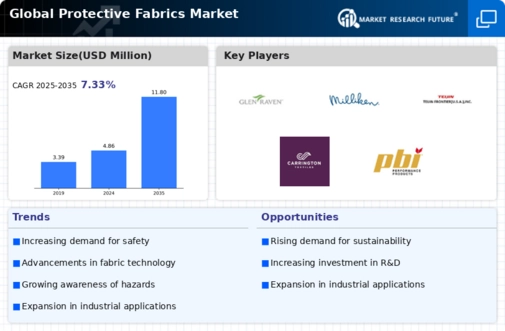
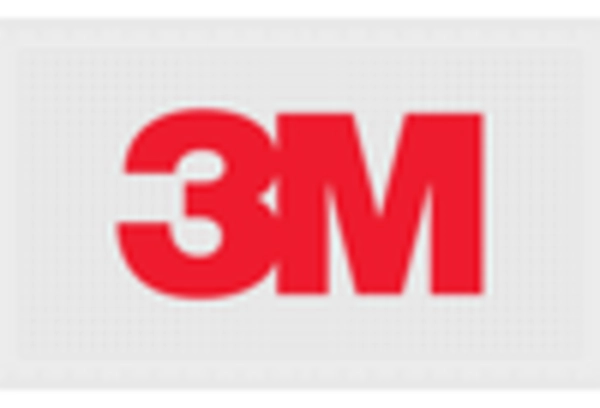
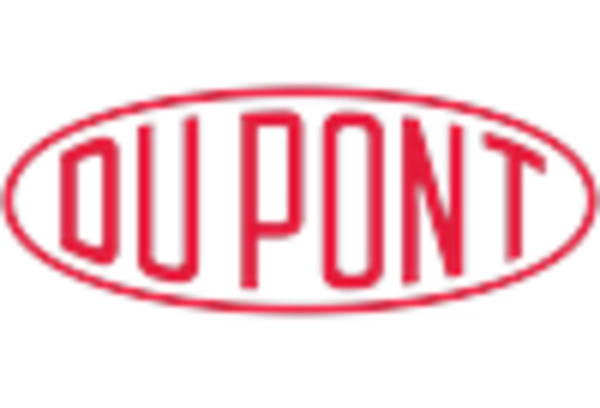

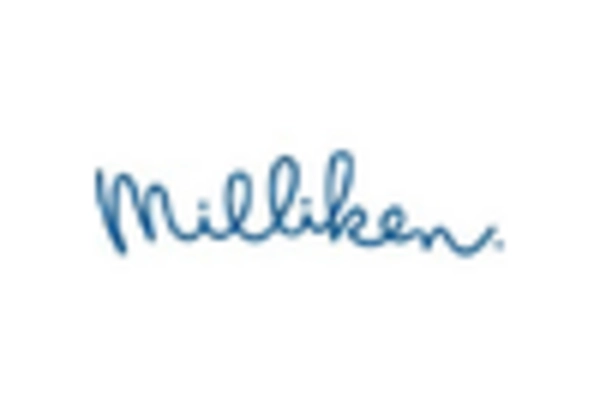
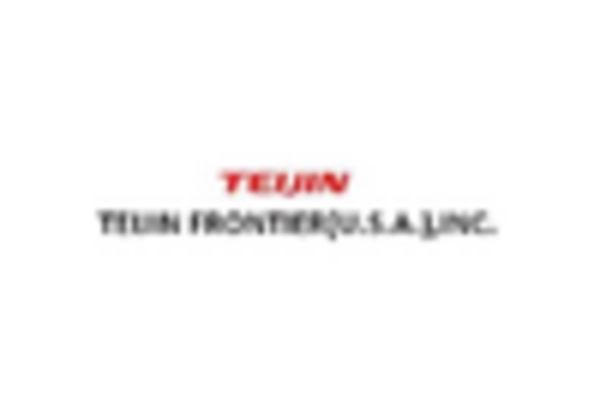
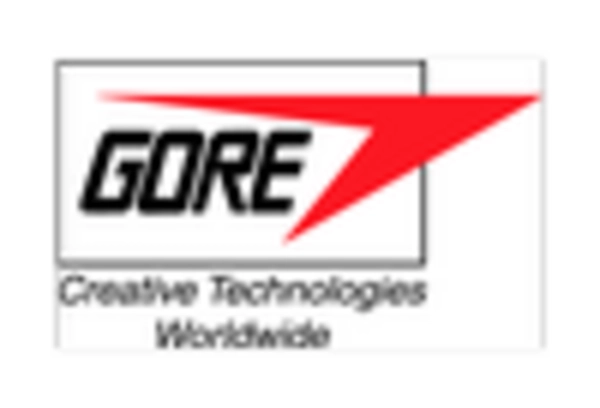









Leave a Comment